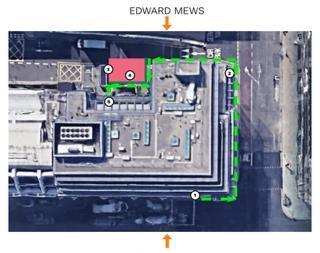As the London mayoral candidates begin to unveil their manifestos and propose new initiatives on housing, they should also be asking themselves: what makes London great?

If you study the data about who works in the capital, it is a group called ‘independent workers’.
These are not bankers or lawyers or oil tycoons. They are people from the science and creative industries - researchers, PhDs, media, technology and IT. They are people from the service industries - healthcare, tourism, restaurants and retail. They are people who make things work - administration and operations. These are the people that drive growth and make London the vibrant, creative and entrepreneurial city it is.
Typically, this group of independent workers earn around £25,000-£45,000 a year. Based on standard affordability tests, people should spend no more than one-third of their gross income on rent. For someone earning £35,000, this means they should spend no more than £1,000 a month in rent. If you want to live within 30 minutes of your place of work in London, I challenge you to find a high-quality, well-run place to live for that level of rent - it is nearly impossible. Yet, we could probably add 500,000 units into that sector tomorrow and there would be immediate demand.
So, why don’t we have it today? The answer is planning policy.
At present, the planning system is geared towards ‘private for sale’ (expensive) or ‘affordable’ (council housing for those in dire need). There is nothing of note for the independents in the middle. When investors and developers run the numbers to build this type of housing for rent, the yields can end up at 3%-4% even for zones 2-4. This is simply not a meaningful economic incentive to build. As a result, it’s hard to foresee any large-scale growth in private rented sector (PRS) housing, in the same way we have seen in student housing for example, until the policies change.
The solution is to create what we are calling ‘indy housing’ - properties that are 100% PRS buildings, targeted at independent workers, with rents of around £250/week. We own and operate a 225-unit property in Stockwell . Its typical rent is £250/week, including water and internet. It is thriving and fully tenanted.
This is true indy housing. Our residents’ employers range from architect Foster + Partners to the Department for Education to retailer Top Shop. We even have a few tenants who earn as much
as £100,000. They are living here because in three years they’ll have saved a deposit - Help Themselves as opposed to Help to Buy.
We were able to purchase this property because of a quirk of history that it came with a ‘hostel’ sui generis use class. If this was traditional C3 residential use class, we would never have been able to afford to buy it and a developer would have surely sold off the individual units at much higher prices per square foot than we are able to afford to charge.
Our recommendation for the next mayor of London is simple. Create a new planning class, or at least a clear variation to the current one, to allow for PRS to be delivered at scale and affordably. London will benefit as a result.
Also, as a slight, but I believe important aside, can we please rename this asset class? PRS sounds more like a disease than somewhere you’d like to live. I like ‘indy housing’. It’s new, it’s dynamic and at least it says ‘housing’. If you don’t fancy that, perhaps ‘multi-unit rental housing’? A bit dull perhaps, but it at least does what it says on the tin.
Ryan Prince is co-founder and CEO of Realstar Living






























1 Readers' comment